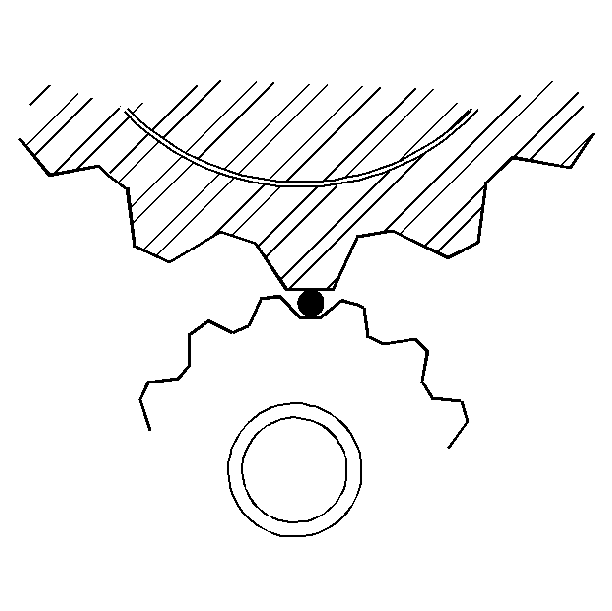Starter Noise Diagnosis General Diagnosis
Step | Action | Value | Yes | No |
|---|---|---|---|---|
1 | Do you hear a high pitched whine during cranking (before the engine fires) but the engine cranks and fires normally? | -- | ||
2 | Reduce the distance between the starter pinion and the flywheel. Refer to Starter Noise. Has the noise stopped? | -- | System OK | -- |
3 | As the key is being turned, do you hear a high-pitched whine after the engine fires? (The engine cranks and fires normally. This is often diagnosed as starter hang-in or a weak solenoid.) | -- | ||
4 | Increase the distance between the starter pinion and the flywheel. Refer to Starter Noise. (Flywheel runout makes this appear to be intermittent.) Has the noise stopped? | -- | System OK | -- |
5 | Is there a loud whoop after the engine fires, but while the starter is still held engaged? (It may sound like a siren if the engine is revved while the starter is engaged.) | -- | ||
6 |
Has the noise stopped? | -- | System OK | -- |
7 | Do you hear a rumble, a growl, or, in severe cases, a knock as the starter is coasting down to a stop after starting the engine? | -- | System OK | |
8 |
Has the noise stopped? | -- | System OK | -- |
Starter Noise Diagnosis Pinion Clearance
Pinion Clearance
- Remove the lower flywheel housing cover.
- Inspect the flywheel for signs of unusual wear such as chipped or missing gear teeth or the flywheel being bent.
- Start the engine and gently touch the outside diameter of the rotating flywheel ring gear with chalk or crayon to show the high point of tooth runout after the engine is turned off. Turn the engine off and rotate the flywheel so the marked teeth are in the area of the starter pinion gear.
- Disconnect the negative battery cable to prevent accidental cranking of the engine.
- Measure the clearance between the top of the ring gear tooth and the bottom of the pinion tooth using the width of a wire gage or standard feeler stock. Normal clearance is 0.5 to 1.5 mm (0.02 to 0.06 inch). The pinion must be electrically or mechanically engaged to make this measurement.
- If clearance is less than 0.5 mm (0.02 inch), and the starter whines after firing, shim the starter away from the flywheel.
- Add 1.0 mm (0.04 inch) shims, one at a time, to both long bolts between starter mounting pads and the engine until the noise problem is corrected. Do not use more than 2 shims total.
- If the pinion clearance is more than 1.5 mm (0.06 inch) and the starter whines during cranking, shim the starter toward the flywheel.
- Add 0.33 mm (0.014 inch) shims between the outboard starter mounting pad and the engine mount until the noise stops. Do not add more than 4 shims total.
- When shimming is done, tighten the mounting bolts.

Notice: Use the correct fastener in the correct location. Replacement fasteners must be the correct part number for that application. Fasteners requiring replacement or fasteners requiring the use of thread locking compound or sealant are identified in the service procedure. Do not use paints, lubricants, or corrosion inhibitors on fasteners or fastener joint surfaces unless specified. These coatings affect fastener torque and joint clamping force and may damage the fastener. Use the correct tightening sequence and specifications when installing fasteners in order to avoid damage to parts and systems.
Tighten
| • | Mounting bolts (diesel) to 45 N·m (33 lb ft). |
| • | Mounting bolts (gas) to 40 N·m (30 lb ft). |
